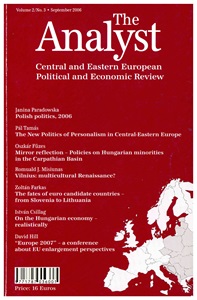On the Hungarian economy realistically
On the Hungarian economy realistically
Author(s): István CsillagSubject(s): Economy
Published by: Globális Tudás Alapítvány
Summary/Abstract: Even the beginning is not easy. What is the Hungarian economy, first of all? Is there an independent economic entity, in a global world of competition, that can be characterized on the basis of national borders? Naturally, in political speeches and in public debate, people never have difficulty interpreting the Hungarian economy as a concept or as a phenomenon. But the change that the third millennium brought is that economic processes no longer take place within national borders, especially not in the case of small and open economies such as Central and East European economies, including Hungary. A typical indicator of that openness is the proportion of foreign trade (export + import) relative to GDP. This indicates how much influence foreign trade and foreign business trends have on economic development. The rate in Hungary is 116%. In other words, total foreign trade exceeds GDP. Similar ratios describe the economies of the Czech Republic (124%), and Slovakia (140%). Such a high rate of foreign trade indicates that these economies are integrated into the world economy, primarily into the economy of the EU, to such an extent that it is difficult to understand what is happening in one of these countries without looking at a European context.
Journal: The Analyst - Central and Eastern European Review - English Edition
- Issue Year: 2006
- Issue No: 03
- Page Range: 97-116
- Page Count: 20
- Language: English

